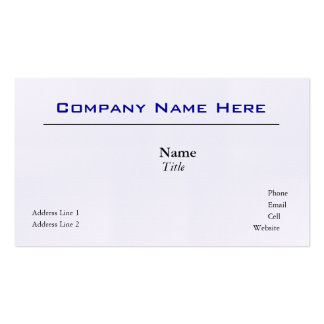The Internet can be an unforgiving place for businesses that fall behind the times. At one moment your business might be getting more traffic and leads from your website than you know what to do with, only to see your leads begin to dry up. Often this is because your website’s design is no longer adequate and doesn’t feature a lot of the cutting edge design elements that are required to give your business credibility online while keeping users engaged with your business. Luckily fixing this issue is often as easy as implementing some new design elements on your website in order to revamp it and bring in new levels of traffic. Here are five strategies that can help:
If you’ve been reading about new trends in website design, responsive design shouldn’t be a term you’re unfamiliar with. At it’s most basic level, responsive design allows a website to appear consistent across all devices while allowing businesses to slightly tweak appearance in order to give users the best experience with their brand online possible.
Obviously if this is something that your business is missing, it needs to be added to your website design repertoire immediately. Navigation should be easy – but it is important to also understand how a user is going to change behavior from device to device and optimize accordingly. Taking a responsive design to the next level requires thinking about what a truly optimized experience is going to be for your users. For example, if you’re a car dealer it might make sense to have your desktop version be more about brand recognition by providing multimedia to users sitting at home, while your mobile version might put more of an emphasis on prices and car features through copy – as users will likely be accessing your site from a showroom.
Obviously this isn’t the same for all businesses – but going a step beyond just what looks nice on each device and how simple it will be for your audience to use it is important. Giving users what they’re looking for in both navigation and content on each device can get your business in gear and single-handedly turn around an online presence.
2) Test Your Design
Making large changes like taking your website from flash to responsive are all well and good, but if your business is on top of the latest trends this is often not where the problem lies (if it is, obviously consider making the change). Often, it is not one large problem that is causing your online business to fail but a series of small ones.
The best way to deal with this is to actively test the most important parts of your site. By leveraging data that you can get by using programs like Visual Website Optimizer, you can figure out what design elements are popular with users and which ones could do with a serious overhaul. This is particularly applicable with things like logos, font style, font size, color schemes, and images.
The results of such tests might be surprising. Often it is not necessarily what you might think looks best that actually performs the best. Understanding what your potential clients find interesting and what drives them away is extremely important to the well being of a website. If you are able to test enough different elements you can figure out how to make your website as effectively tailored as possible for your users.
3) Get a Content Management System (CMS) You Love
One of the most difficult parts of making sure that your website is an essential part of your business is to continuously create content that keeps your audience engaged. It can be very easy to let this slide if your website is performing well initially – particularly if getting new content published on your website is a hassle. One of the easiest ways to solve the time sink of content publishing or updating parts of your site is to make sure that your content management system, or CMS, is easy to use.
There are a ton of different CMS options out there, but make sure when you are building or revamping your website that you take your time weighing the pros and cons of each one and making an informed decision about what kind of CMS you will need and whether or not it will be tailored in a way that will make it easy for you to manage your website.
4) Understanding Analytics and User Behavior
One of the biggest issues a lot of businesses have is that they never bother to install or learn to properly read their website analytics. As a result, a lot of businesses stay completely in the dark about where users are coming from, what they are looking for on the site, and how they are behaving while they are there. Google Analytics is a fantastically powerful tool that will help your business to better decipher a lot of data that you won’t be able to get anywhere else – use it to your advantage when you’re designing.
Understanding what pages on your site are popular with users, how they navigate through your website and at what stages in the process of buying a product they give up and leave is important information for any business to have. Being aware and making website design decisions based on the information will help you to make sure that your decisions will actually help you and your users instead of just changing the user experience and hoping that it is what your audience is looking for from your website.
If you want to take your understanding of your website to the next level, consider investing in software that will further break down specific user behavior on individual pages. A great option for this is to use software like CrazyEgg. The great thing about CrazyEgg is it shows you exactly where on a page users are looking, for how long, and where on a page they are when they navigate away. Using this data is extremely helpful if you have long pages with lots of content, as it will let you identify specific elements that might be driving users away and make appropriate design changes.
5) Stress Over Speed
Sometimes the difference between a great website and a website that is failing to produce can be measured in seconds. If you have an extremely image heavy website or a website that has a lot of multimedia elements that need to load, it can sometimes be enough to send users to other sites. No one likes to wait for content – particularly on the Internet. Adding to this issue is the fact that Google’s Algorithm now factors speed into its ranking algorithms, meaning that your website will show up lower on Google search rankings for valuable keywords that might otherwise be generating revenue for your business.
Hearing this might scare some business or website owners into panicking and removing a lot of visual or multimedia elements in order to try and increase website speed. This can be helpful within reason, but it is important to not get too carried away. A pretty simple fix is to “losslessly compress” the images you use on your website. This basically means that images will be smaller in terms of file size – allowing users to download them faster and improve overall website speed.
Speed optimization isn’t necessarily a web design fix all the time, but more often than not if you find your website is slow it can be helpful to take a step back and really think about what pieces of content you need to keep your users engaged with your site and which images or videos are unnecessary. A great way to figure this out is (you guessed it) to put step two above to work and test to see how your website or individual page performs when an image or multimedia asset is removed.
In Conclusion…
Websites can be a difficult beast to deal with when things are going wrong and it isn’t generating the kind of revenue you would like to see. However, if you’re reading this you are already taking the first and most important step towards getting your website to perform better – you need to care.
Too often business owners think that a website is something that should always perform with very little maintenance. This is simply not true – the best websites are incessantly coddled until they grow into mean performing machines. Even then, they need tuning up quite often to stay at their best. If you put the steps above to work on your site and continue to care about your website’s well being, you’re well on your way to creating a great site that will perform for your business.






No comments:
Post a Comment